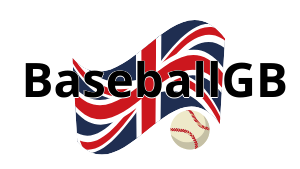(Walker & Company, 2006)Â 352 pages.
In Green Cathedrals (4th edition), Phil Lowry catalogues baseball fields that have hosted major league games. As Lowry acknowledges in the book’s preface, a number of other ballpark books have been published, but none “has ever provided a complete listing of every major league park, including Negro League parks.” The inclusion of Negro League games in Lowry’s definition of major league play not only makes for a much better representation of the history of baseball, but also captures some of the strangest field configurations.
Perhaps no configuration is more strange than the outfield of Clark Field, in Austin, Texas (a neutral site used in 1949-50 by the Houston Eagles of the Negro American League, pictured here). The outfield was split into two levels by a limestone cliff; to access the upper level, players had to climb a goat path in left-centre.
In addition to hosting major league games, the field was the home of the University of Texas Longhorns until the mid-1970s.
“A typical play occurred in 1973, when the Longhorns got an inside-the-park homer to third base. The left fielder and center fielder were playing ‘down below’ when a towering fly ball was hit to deep center. The center fielder went back to the cliff, but the ball landed up on the plateau. The left fielder ran up the goat path to the plateau, but the ball hit some of the rocks on top of the plateau and bounced down toward the left field line. The nearest fielder was the third baseman, who retrieved the ball, but his throw to the plate was no way near getting the batter out at home.”
Clark Field is one of over 400 baseball fields, arranged by town, that are covered in Green Cathedrals, and for each of the entries the details include: the architect and location; the occupants; alternative names; a chronology of the capacity, field dimensions, and fence heights; pre-construction and post-destruction uses; and a wonderful category labelled “phenomena”, in which noteworthy events are presented. This last category, coupled with numerous fascinating photos (including groundskeepers planting ivy vines by a bare Wrigley Field wall in 1937), gives this book the rare honour of being an invalubale addition to a sports reference library (aided by an extremely thorough index) while being equally well-placed on a coffee table.
Turn to any page in the book, and there’s bound to be at least one fact you will feel compelled to share in your next baseball conversation. In Britain, that next conversation could be days or even weeks away, but as a blogger, I am fortunate in not having to wait that long…
I’m going to open the book at five random double-page spreads and present my must-share findings in the format of a quiz (you might know some of these already).
Q. How tall is the lowest outfield fence to have been used in a major league game?
A. One foot, in front of the right-field bleachers at Pittsburgh’s Greenlee Field, which was used by the Homestead Grays and the Pittsburgh Crawdads of the Negro National League.Â
Q. Why, between 1998 and 2000, did the Diamondbacks’ field have two warning tracks with a strip of grass between them?
A. Buck Showalter, the team’s manager, wanted to confuse outfielders on visiting teams.
Q. Why was the White Sox’ grass cut long around shortstop but short around second base under Eddie Stanky’s managerial tenure?
A. Because the shortstop had a relatively poor range, while the second baseman had a very good range. (Other customizations included adding extra paint to the foul lines when the Sox had proficient bunters, to help keep bunts fair.)
Q. What happened in 1941 to floodlights ready to be installed at Wrigley Field?
A. They were donated by owner Phil Wrigley to the war effort. (It was not until 1988 that lights were first turned on for a home Cubs game.)Â
Q. In which city was the first covered major league ballpark?
A. New York. In 1939, the New York Cubans played on a ballpark underneath approach ramps to the Queensboro/59th St Bridge, which, with an infield covered with small dark-grey cinders and ash, was also the closest a major league field, by Lowry’s definition, has ever come to a real “sandlot”. (Houston’s Astrodome was the second covered major league ballpark.)
Have you read “Green Cathedrals”? Feel free to share your thoughts in the comments section below. Can you recommend any other similar books? If so, let us know.

